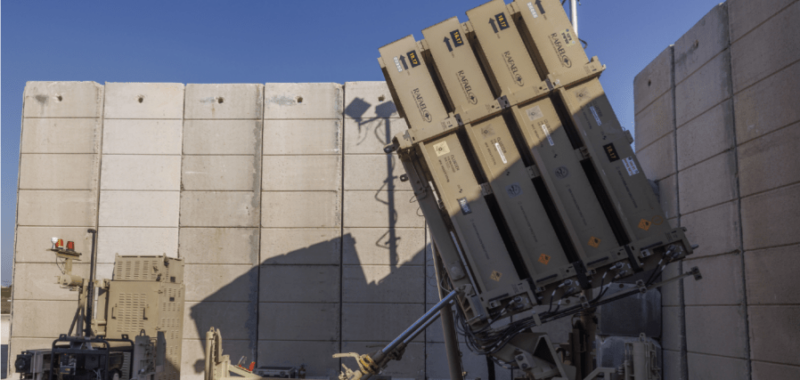
Now known as “Golden Dome,” President Trump’s original call for a version of Israel’s “Iron Dome” to defend America’s homeland and its overseas bases remains on point.
Israel’s military bases, infrastructure, cities, borders and other vital targets face every aerial danger imaginable, from increasingly integrated mortar, rocket and attack drone swarms to Iranian cruise and ballistic missiles that could eventually carry nuclear warheads. Working closely with the U.S., Israel has developed, produced and battle-tested the world’s most sophisticated air defense network against these threats.
The results speak for themselves. Since 2011, Iron Dome has saved countless lives by intercepting more than 90 percent of short-range projectiles fired at built-up areas. Last year, the higher layers of Israel’s air defenses that America helps fund — David’s Sling and Arrow — blunted two massive barrages of longer-range missiles from Iran, including by using hypersonic kill vehicles in the upper atmosphere and beyond.
Though America’s enemies are much farther away than Israel’s, the basic imperative is similar. Unlike the Cold War, we now face two hostile superpowers, each of whom is improving its ability to attack strategic sites in our homeland with integrated strikes of nuclear and non-nuclear weapons, including intercontinental ballistic missiles, cruise missiles and highly maneuverable hypersonic glide vehicles. North Korea and Iran have smaller but advancing intercontinental ballistic missile programs.
America’s defense establishment has focused on these evolving threats, but recently everyone from great powers to terrorists and Mexican drug cartels has proven capable of launching drones, spy balloons and other, ever more ubiquitous, aerial systems over the U.S. and our overseas bases. Beijing, Moscow and Tehran show continued interest in setting up shop in our backyard; for instance, Iran potentially building attack drone facilities in Venezuela.
Due to America’s continental size, our defensive needs are unlike Israel’s. It’s not automatic that our ground-based interceptors in Alaska and California could defeat North Korea’s intercontinental ballistic missile salvos, let alone larger and more complex attacks.
Many of our forces abroad are vulnerable to mass precision attacks using cruise missiles and other projectiles, necessitating certain forward-deployed defenses at sea and ashore. And while combat aircraft can defeat unarmed Chinese spy balloons, detecting even these rudimentary, slow-moving craft is difficult.
Though credible deterrence does not require eliminating every single threat, gaps in our defenses lead our adversaries to believe they can execute costly strikes on the U.S. and our forces. The urgency and scale of this challenge require a broad approach to build more resilient, capable and integrated missile defenses for the U.S. and our allies.
Accordingly, as airborne threats proliferate at the high and low ends, deterrence and homeland security entail a layered air defense architecture that can track and defeat both the archer and his arrows before they hit home.
Building a Golden Dome should leverage our partners’ hard work, as the president’s executive order recognizes. The U.S. played a key role in Israel’s multilayered defenses, including more than $9 billion in total funding over two decades for research, development and production of existing and future systems.
For starters, the Pentagon can harness proven technologies that the U.S. has already paid to develop. Israel could help with the joint output of existing short-range systems to counter drones and other immediate threats like those facing our borders.
Such defenses already show promise for U.S. forces, as the Marine Corps prepares to field modified Iron Dome batteries, but both the U.S. and Israel could benefit greatly from producing these systems at a larger scale.
Likewise for Israel’s ongoing development of directed-energy defenses like microwaves and lasers. Currently, somewhere between science fiction and fieldable weapons, these offer real potential to counter swarms of drones and other threats much more sustainably than current systems.
Bending this cost curve is no small consideration: The cheap, replenishable projectiles fired by the Iran-backed Houthis force the U.S. to expend scarce, multimillion-dollar interceptors designed to counter intercontinental ballistic missiles and other strategic threats.
Parallel to producing more proven and shorter-range systems, therefore, the two countries also should accelerate efforts to field Iron Beam and other cutting-edge technologies, and to enhance co-production of systems, already fielded by Israel against Iranian missiles, to address America’s vulnerabilities to intercontinental ballistic missiles and other higher-level threats.
Defenses must be bolstered throughout the kill chain, since they can only intercept what they can first identify, track, and fix. Israel’s defense sector could boost existing U.S. efforts here, too. Its development of satellites with small payloads and appreciable intelligence-collection capabilities could support a multi-layered sensor network extending from the seabed to space.
This matters in an operational environment requiring multitudes of space-based sensors to detect incoming threats, and to pick out the highest priority targets in large swarms that may also include decoys.
These are just some of the steps required to address our vulnerabilities, but fortunately, they build on joint U.S.-Israel efforts that have already defied long odds to achieve real results.
Jonathan Ruhe is director of foreign policy at the Jewish Institute for National Security of America.

